#nero 1986
Explore tagged Tumblr posts
Text

Happy Nero Day! 🔥🔥🔥
(I know he didn't burn anything, just let him have fun right now)
27 notes
·
View notes
Text
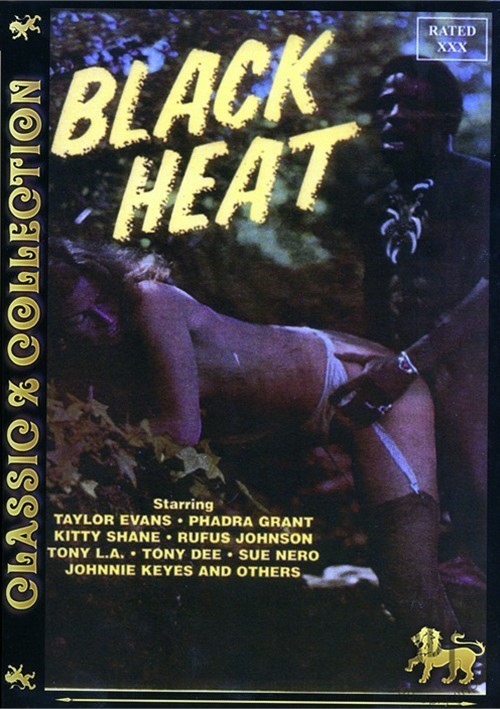
Adult Movie Posters Classic Collections Presents: Black Heat (1986) Susie Nero - Kitty Shayne - Johnnie Keyes - Ashley Welles - Tony Dee - Rufus Johnson - Tony Elay - Phaedra Grant
#MovPov13#AMP#1986#Susie Nero#Kitty Shayne#Johnnie Keyes#Ashley Welles#Tony Dee#Rufus Johnson#Tony Elay#Phaedra Grant
3 notes
·
View notes
Text

Grabbing Bulletins At NERO Tower - Gary, Indiana
A westbound Conrail van train slows to grab some bulletins at Conrail's NERO (NE) Tower in Gary, Indiana on July 13, 1986. NE sat at the west end of Pine Yard in Gary, Indiana on the old NYC.
25 notes
·
View notes
Text

CHARLES MINGUS E ORSON WELLES
CAPODANNO AL FIVE SPOT
Capodanno 1959, seduto in prima fila, proprio sotto il contrabbasso di Mingus c’era Orson Welles, quasi un alter ego del jazzista, per genialità, esuberanza, fierezza, complessità. E anche per le tante disavventure artistiche. Per Mingus era un idolo, lo seguiva dai tempi radiofonici di The war of worlds, adorava Quarto potere (dove in una scena c'era il suo amico d'infanzia Buddy Collette che suonava il sax in una festa sulla spiaggia), ammirava il suo modo di vestire, il suo impegno politico (sempre in prima linea per la difesa dei diritti civili, il suo Macbeth tutto nero è del 1936), la sua voce (“mi ricorda Coleman Hawkins. Potevi sentirla a un miglio di distanza”). E non era il solo jazzista a essere stato sedotto dalla voce radiofonica di Orson Welles, anche Miles Davis lo citava come un’influenza sul suo modo di suonare: “Fraseggio, tono, intonazione: tutte queste cose possono avere come modello un maestro della parola”.
Il 1959 sarà un anno d’oro del jazz per quantità, qualità, creatività. Al Five spot, piccolo, fumoso, maleodorante locale di Bowery, scelto come luogo di riferimento da artisti e intellettuali, l'anno comincia con un formidabile double bill: sono di scena, uno dopo l’altro, Sonny Rollins, alla testa di un trio con il bassista Henry Grimes e con il batterista Pete La Rocca, e Charles Mingus con il pianista Horace Parlan, il batterista Roy Haynes (che sostituisce il fedelissimo Dannie Richmond arrestato) e i sassofonisti Booker Ervin e John Handy. È la prima sera dell’anno, ma nel club di Bowery dei fratelli Joe e Iggy Termini è anche l’ultimo impegno di quel prestigioso, favoloso cartellone con Mingus molto irrequieto per tutta la scrittura. Aveva appena registrato la musica per il film di John Cassavetes Shadows, una colonna sonora bocciata nel rimontaggio finale (la stessa cosa sarebbe successa anni dopo con Todo modo di Petri), aveva ripreso i suoi musicisti brutalmente e una volta aveva minacciato violentemente i clienti di un tavolo che, durante il suo set, non smettevano di parlare. Oltretutto ogni sera tendeva ad allargare il suo set e Sonny si inferociva, talvolta rifiutandosi di suonare. Ma era un gran clima, entusiasmante e effervescente. Rollins era in un momento di transizione, alla vigilia di un ritiro clamoroso per rinnovare il linguaggio del suo sax tenore con il leggendario e solitario corso di aggiornamento stilistico sul ponte di Williamsburg: «In un posto tranquillissimo, un angolo morto che oggi sarebbe impossibile ritrovare con il traffico che c’è» il suo racconto, dove poteva esercitarsi liberamente.
Anche Welles, come Mingus, era reduce da una delusione cinematografica: la Universal gli aveva tolto di mano la post-produzione del nuovo film, L’infernale Quinlan, ne aveva tagliato una ventina di minuti e aveva fatto girare nuove scene, modificando il primo montaggio. Più o meno nello stesso periodo era finito in soffitta un documentario intitolato Viva Italia (Portrait of Gina) perché Gina Lollobrigida aveva messo un veto, non gradendo il suo ritratto di giovane attrice ambiziosa e la Abc tv lo aveva bocciato ritenendolo cosi poco ortodosso da non poter essere trasmesso. Era un film di mezz’ora scarsa sull’Italia, paese che Orson ha frequentato per 20 anni (la terza moglie è stata l’attrice italiana, Paola Mori). Dopo un lungo oblio (Orson aveva perduto l'unica copia esistente all'Hotel Ritz di Parigi) è stato riscoperto nel 1986, proiettato al festival di Venezia ma poi di nuovo bandito su intervento della Lollobrigida.
La presenza del regista di Quarto potere al Five spot non era casuale
Nel club di Bowery si poteva incontrare chiunque, da Jack Kerouac che leggeva le sue poesie, alla mitica baronessa Pannonica de Koenigswater scesa dalla sua Rolls Royce, a William de Kooning che voleva respirare la libertà del jazz, a Leonard Bernstein che si divertiva a curiosare nella notte, allo scrittore Norman Mailer con la sua passione per quella musica. Ma la musica da sempre è stata una grande passione di Welles. La mamma pianista gli aveva fatto prendere lezioni di piano e violino e Orson aveva anche mostrato un certo talento, tanto da essere considerato un ragazzo prodigio. In gioventù era stato un grande sostenitore del jazz di New Orleans, ma sicuramente ammirava Charles Mingus per la sua musica e la sua personalità, il suo impegno, il suo agire tellurico.
(Marco Molendini)
Non potevo non condividerlo.
Due miei ingombranti miti nella stessa foto, nello stesso locale, nello stesso articolo.
26 notes
·
View notes
Text
1986 years ago, on december 15th 37 AD...



... 5th roman emperor, last in the Julio-Claudian dynasty – Nero [ Nero Claudius Caesar Augustus Germanicus, originally named Lucius Domitius Ahenobarbus ] was born !
#ancient rome#nero#be nicey on this post you can see my url you can tell i like him .#im never making a post with punctuation and proper capital lettering again this is a special nero miracle#also an opportunity to share my phone wallpaper for the past 2 years . last image the statue from anzio#emperor nero
30 notes
·
View notes
Quote
[...] «Meloni ha sempre proclamato fedeltà a Pino Rauti, fondatore di Ordine Nuovo, dalle cui fila sono usciti gli stragisti degli Anni 70. Ha partecipato a una manifestazione con Ciavardini e criticato la sentenza di condanna sulla strage di Bologna. Il deputato Mollicone ha ricordato in Parlamento il depistatore generale Maletti, definendolo “uomo di Stato”. Ciavardini è uscito dal carcere grazie a Claudio Barbaro, attuale sottosegretario, e a sua volta ha fatto uscire dal carcere Cavallini». Ha senso sollevare una questione fascista sulla commissione antimafia? «Dopo il fascismo c’è il neofascismo: implicato nella stagione delle stragi con ampie coperture istituzionali, ora è penetrato nello Stato, presidia la tolda di comando. È una lunga marcia. Prima per sovvertire la Costituzione, oggi per svuotarla». In che modo, visto che parliamo di una commissione di inchiesta? «L’elezione della Colosimo interviene in un momento particolare. La Corte di Bologna ha appena condannato Bellini, neofascista di Avanguardia Nazionale, che nel 1992 era in contatto con gli esecutori della strage di Capaci e suggerì la strategia di colpire i beni artistici, come fatto nel 1974 da Massimiliano Fachini, leader di Ordine Nuovo a cui apparteneva Pietro Rampulla, artificiere di Capaci. La sentenza di Bologna rivede il delitto Mattarella recuperando la matrice di destra eversiva, come sosteneva Falcone. Stefano Delle Chiaie era a Palermo nel periodo delle stragi. Su questi temi dovrebbe misurarsi la commissione antimafia. Come potrà farlo con questa presidente?». La Colosimo è nata nel 1986. È anagraficamente distante. «Ma è imbevuta di questa solidarietà ideologica. E viene eletta non per un capriccio personale o debito di amicizia della premier, ma con una precisa missione». Quale? «Costruire una contronarrazione revisionista e negazionista: le stragi sono opera solo di Riina, niente c’entrano massoneria, servizi segreti, neofascisti. Al massimo qualche imprenditore del Nord dagli affari sporchi». Ci saranno conseguenze sulle indagini giudiziarie? «Devastanti. Immaginiamo come questa notizia sarà letta da personaggi come Graviano, al 41 bis, o Bellini, che attende il processo di appello per la strage di Bologna». Come? «Questa è gente che conosce i codici del potere meglio di me e lei. Il messaggio è chiaro: sul patto di fedeltà al fondatore di Ordine Nuovo si fonda il controllo di un’istituzione delicatissima. Crede che questo possa incoraggiare collaborazioni?». Meloni e Colosimo hanno un’amicizia antica. «Per una statista, di fronte a una questione istituzionale l’amicizia recede. A meno che non sia lo schermo di una visione strategica, la rilegittimazione del neofascismo. Questa elezione ne è una tappa fondamentale. C’è un filo nero che si dipana». Avevate provato a evitare questo esito? «Avevamo detto: indicate un altro nome, lo votiamo anche noi. Invece la Meloni ha insistito, pur sapendo che noi saremmo usciti dall’aula, una cosa mai successa. Una linea Maginot di decenza». [...]
Da: Scarpinato- “Un filo nero da Rauti a Meloni i neofascisti dietro le stragi”
La Stampa
67 notes
·
View notes
Text
“ Si tolse tutto. Prima d’indossare biancheria pulita volle considerarsi. Era diventata più bianca, il seno lento, pendulo. Scoraggiata, sedette sull’orlo del letto: le grandi mammelle si poggiarono su una piega dell’addome. Nelle gambe risecchite la carne pallida dei polpacci dondolò, come staccata dall’osso. Vergognoso lasciarsi andare così. Ma perché avrebbe dovuto riguardarsi? Nutrirsi con raziocinio, rifiorire? Per chi? Uomini, amori, figli non ce ne sarebbero stati mai più. Né vanità, né illusioni. Forse ancora scrivere, leggere, studiare: di queste cose aveva provato nostalgia, e se n’era punita. Per esse ricominciare? A che pro? Fra un certo numero d’anni sarebbe giunta la morte. Forse suo fratello José, o Jéronimo, avrebbero continuato la stirpe dei Fonseca. Ma a lei cosa importava? Tutta la vicenda sua, e l’universo, finiti con lei. Cosa poteva rimanerne? I versi? Se proprio non “facevano schifo”, come disse Primicerio, erano nulla in paragone a quelli di Metastasio, Rolli, Parini. Di costoro, forse, qualcosa resterà. Fra cent’anni, duecento: nel 1983, meu Deus! Ma di me? Nada de nada. Il resto di niente. Ebbe voglia dolorosa di ripigliare libri, carta, penne. Forse per vergogna: si può star così a guardarsi vivere? A vegetare, senza coraggio, senza zelo? Senza devozione neppure per te stessa? Probabilmente anche in questo caso ha ragione il signor di Voltaire, quando sostiene che comunque dobbiamo coltivare il giardino. Un giorno, grazie al nostro lavoro, spunteranno fiori, frutti, i bambini mangeranno. Se nessuno s’occupa del giardino il mondo finisce. E con ciò? Mah. Forse, semplicemente, era la sfida della primavera. Si cambiò, indossò il solito vestito nero. Si spogliò di scatto, cercò l’abito di lanetta color pesca. Aprì il cassetto dei soldi, fece i conti: sì per il busto nuovo, anche altre piccole cose necessarie. Mise al collo un nastrino di velluto giallo, cercò uno scialletto, se ne uscì. “
Enzo Striano, Il resto di niente, Mondadori (collana Oscar Classici Moderni n° 199), 2011¹¹; pp. 153-154.
[1ª Edizione originale: Loffredo edizioni, Napoli, 1986]
#Enzo Striano#Il resto di niente#letture#leggere#Metastasio#Eleonora de Fonseca Pimentel#Napoli#Campania#narrativa#Repubblica Partenopea#romanzo storico#illuminismo#libri#Storia delle donne#Settecento#XVIII secolo#emancipazione#citazioni letterarie#anni '80#letteratura italiana#Rivoluzione#scrittori napoletani#Italia meridionale#Storia d'Italia#Voltaire#letteratura italiana del '900#primavera#intellettuali meridionali#letteratura partenopea#coraggio
22 notes
·
View notes
Text
Who is the best Disney villain? Part 3.
#disney animated canon#the aristocats#robin hood 1973#the many adventures of winnie the pooh#the rescuers#the fox and the hound#the black cauldron#the great mouse detective#oliver and company#polls
5 notes
·
View notes
Text
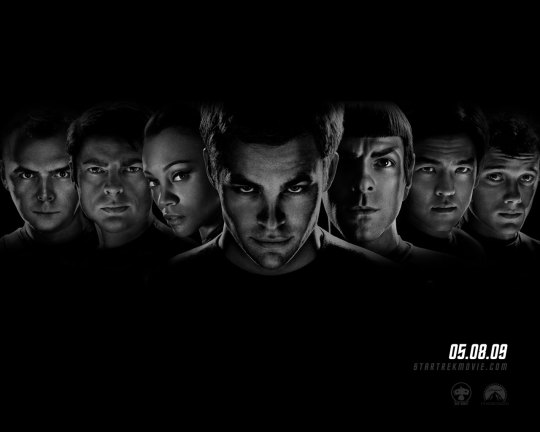
On this anniversary of a film that I wanted to hate but immediately fell in love with, I want to take a moment and wax poetic about the Kelvin Timeline. There was a lot of consternation then (and probably with some fans still) about there seeming to be differences to the timeline BEFORE the Narada incursion; the Kelvin had 800 people on board in a time a decade before the Constitution Class which only had 200 people on board under Pike. Things like this.
Now, do I know it's because JJ Abrams did no thave the encyclopedic knowledge of Trek I do and just thought George Kirk saving 800 lives sounds a lot cooler than a hundred? Sure. But...
There's no way in Star Trek to make a single incursion in a timeline. Think about this: Nero goes back, changes how the Enterprise will interact with the galaxy three decades later. So now, does the Enterprise go back in time and work with Gary 7 in 1968? Does Captain Christopher encourage his son to grow up and lead a Saturn mission? Do they go back to San Francisco in 1986 and invent transparent aluminum? Later on, does Sisko go replace Gabriel Bell?
(On a side note: I thought this would be the plot of Picard S2. The altered timeline kept the Bell Riots from being affected by Sisko and causing a closed temporal loop...why else put it in California in 2024 and talk about Sanctuary districts?)
We know there are other changes to the prime timeline caused by time travelers because Strange New Worlds tells us so; but THOSE changes aren't necessarily reflected in the Kelvin timeline. The Eugenics Wars are delayed almost half a century in the Prime Timeline now (possibly early on; even in TWOK Khan says he was from 200 years earlier...in a film that takes place in 2285)...but in STID Khan is from 300 years earlier, so still in the late 20th Century roughly.
Basically, once a temporal incursion hits a timeline, it doesn't just change those specific events; it alters any OTHER temporal incursions that were otherwise caused by that future. Brannon Braga said as much about ENT, that the incursion from the Borg in FC affected how Cochrane did things, and potentially changed whether the history we see on that show is exactly what preceded TOS.
I suppose I'm just saying that Star Trek is a big ball of wibbly-wobbly, timey-wimey stuff...and I think that's ok. Just gives me more trivia to memorize.
Thank you and Happy Birthday Trek '09.
3 notes
·
View notes
Text
THE DISCOGRAPHY PRINCIPLE, Episode 6: Kraftwerk - or, Electro-Shock for President
I've actually been sitting on this one for a really long time. It's hard to think of anything meaningful to add in the presence of History itself.
youtube
TIME Magazine had this cute cover out on February 8th, 1993 — a guy sits on his computer, his left eye is prosthetic and the cables from the CRT screen swerve and swirl towards a purple spiral in the background. Big title in the middle, CYBERPUNK, and right under there a small blurb that reads like an amateur Steam developer trying to make his generic-ass game set in twenty-seventy-something appealing to you. It's mesmerizing to think that the early 1990s were still a time where you could legitimately hope for a cyberpunk utopia without hearing your own personal Seinfeld laugh track in your head. Of course this devolved into one of the foundational bits of reading in my teenage years: Ondarock's biographic pieces about specific artists and bands. Eddy Cilìa — one of the deans of Italian music criticism — wrote one about Kraftwerk that at one point says the following (translated to English by yours truly):
"… if Kraftwerk's music is still to this day all bent forward, lyrics and visual concepts still taste more like modern antiques than they do modernity. Theirs is a vision of the future hailing from a past when it was possible to imagine prosperous and tidy days to come, with squeaky-clean cities, immense green spaces, eight-lane highways overruled by giant electronic brains. Before the petrol wars and microchips. Before Blade Runner. Before cyberpunk. Before we realized we were fucked. Those who know that unforgettable William Gibson short story, The Gernsback Continuum (off of Burning Chrome) will understand."
youtube
Cue the BBC using Kraftwerk's Musique Non Stop and Electric Café to soundtrack William Gibson reading some of the bleakest bits off of Count Zero (I'm gonna link the program here, but unfortunately the bits where the tracks play have been muted, so there's that). I don't even find it infuriating or distracting or inappropriate, even: at this point cyberpunk as an aesthetic is modern antique, whereas cyberpunk as a collection of themes wildly oscillates between the hopelessly romantical and the unfortunately timely. Both of these things very aptly describe Kraftwerk's Electric Café, the last record with the classic lineup of Hütter, Schneider, Bartos, Flür. Electric Cafè, or Techno Pop for either irredeemable zoomers or the unlucky few who worked with the band from 1982 to 1986, sounds like someone trying really hard to be relevant: Sex Object is like one degree of separation away from Depeche Mode, minus the inherent sexiness of Depeche Mode — as retroactively superimposed as it may be — and as such laughable, and not in a good way. Basically the entirety of side one (perhaps even The Telephone Call, if Computer Love didn't already exist) would go stupid hard if it had come out on, for instance, in The Man-Machine era. Unfortunately the record feels too thematically unsound to work the way a Kraftwerk record usually works, mostly because for the first time ever the band seem to take the concept with actual seriousness.
youtube
So many people focus on the supposed future-proof nature of Kraftwerk which in retrospect kind of feels a bit laughable — it's like when some of these YouTube guys allow the possibility that the work of a band like Boards of Canada "still sounds fresh". It's good, obviously, but can we really close our eyes and pretend like no one ever considers making intentionally warbly sounding electronic music in the year of our Lord two-thousand-and-twenty-four, where people are falling head over heels for the new Oneohtrix Point Never record? Kraftwerk is dated, because Gary Numan and John Foxx and Depeche Mode and Afrika Bambaataa and the Soul-Sonic Force and Cybotron and Model 500 and Aphex Twin and Autechre and Deadmau5 and Avicii and Skrillex and NERO and Caterina Barbieri and DJ Haram and Suzi Analog and so many others exist and have, in their own way, dated. That is exactly what makes Kraftwerk the greatest. Their studio production mostly wears its age with confidence: sure, if you want to be terrible to it you could argue it sounds like a bunch of Apple IIe terminals desperately fighting for their life in the bathroom after a night out at Taco Bell, but that would fundamentally miss the core point which is that they very clearly fucking knew that this was going to happen. And even their lyrical optimism is much darker than most give them credit for. Like, seriously, stop and think for a moment: science fiction in the 1970s was all about aliens, everywhere. Isaac fucking Asimov, robot dude par excellence, wrote a book about aliens for the first and, if memory serves, only time in the year 1972, and then never again. The highway was a gleefully old fashioned concept to be excited about, and so was the train — more so than the highway, actually. They hopped back onto the zeitgeist with Computer World, but again, it was minimal, barren, and the lyrics used to bite. The German version of the title track, for instance, loves to remind the listener that "Interpol und Deutsche Bank, FBI und Scotland Yard, Finanzamt und das BKA haben unsere Daten da" — they have our data there!
youtube
A while back there used to be this great blog on this site called One Week One Band where they once did a week fully dedicated to Kraftwerk which explains most of the shit I would be going on in this post, and does so in a much more interesting and accurate way than I could ever; obviously so, since I'm writing at 3:20am because I had a really rough Tuesday night which fucked up my sleep schedule into unrecognizability. Anyway yeah I'm not even going to try to actually get into the lyrics, mostly because I never really gave a shit, minus the funny bits about meeting Iggy Pop and David Bowie from station to station back to Düsseldorf city and that bit about how they want to fuck an up-and-coming starlet (Big Black really upped the sleaziness factor in their cover, actually making it sound more like Kraftwerk's backstage activities — at least according to Wolfgang Flür — than Kraftwerk's recorded output); the short version is that it's simply insane to me that nobody ever bothered thinking "goddamn, this is simply too shiny and chrome and polite to be serious, and how the fuck am I supposed to take the robot disguise seriously, maybe they're taking the piss somewhat?", which is extremely egregious given the very nerdy humor on constant display in their lyrics and song titles — Antenna, for instance, reads like a dirty poem on a trade school's toilet stall, and I don't think I have to add anything to Ohm Sweet Ohm. But what do you know: as some of you might have guessed I like nerdy humor that makes no sense and fails catastrophically at conveying any sense of zest and class and sexiness, because Kraftwerk never meant to be fucking sexy. They wanted to make volksmusik, i.e. a literal German translation of popular music. They succeeded.
youtube
In case you're wondering, my favourite Kraftwerk record changes depending which one I've listened to the most recently, but gun to my head I would probably say Trans Europe Express. I spent a lot of time listening more or less exclusively to the German language versions of some of these records, and it's weird using the English titles for me, but ultimately it makes more sense. If it is to be volksmusik, in this day and age, it has to be musik of all volk, and as such of all folks, and statistically speaking there are more people speaking English than German — at least in my personal social circle. Anyway, the thing about TEE could be this: the beauty of it is that it has everything in itself, but the real kicker is that none of that is made explicit to the fullest. All of the sequenced hopping synthpop, the melancholy melodies of New Romantic, the drive and danceability of hip hop, a certain sense of coldness that post-punk as a whole would make its own — see Ian Curtis's obsession with this particular record (and, on a slightly different note, how the surviving members of New Order would go on to sample Uranium, which if you ask me might rank as one of the hardest interlude tracks on any record ever) — are here but in very throwaway forms, i.e. they do not make the case for themselves. In the moment of their conception, they must have been seen as ad-hoc arrangement tactics, perhaps even as a holistic compositional approach: they are not their own justification, nobody woke up and said "I am going to make a whole record about this here technique", as testimonied by the change in mission statement right in the middle of the making. The band had been recording trains to see if they could use the inherent rhythm in their motion to make something danceable, but they realized it didn't work because they'd have to be sped up to unrecognizability; so, they dropped the field recording/tape loop idea and recreated the groove in the studio with conventional drums. On the other hand, cue John Foxx turning into a Ballardian neon-lit dandy for his solo debut, extrapolating on TEE's sounds to better delineate a colder, more anthropic, more impersonal, more atonal and (why not?) perhaps more violent European landscape.
youtube
youtube
Sure one might argue that their reference landmarks are predominantly European, predominantly focused on the classical era of music (1600s-1800s, very roughly), predominantly if not entirely diatonic, but their opus very clearly works — it very clearly has worked, over and over again — as a potentially ever-expandable theoretical framework. Their minimalism became the empty spaces it left open, the boxes it didn't tick. As much inspiration as Kraftwerk drew from funk, a slight increase of the funk coefficient on the part of black artists in the United States invented techno, hip-hop, electro. Kraftwerk didn't, themselves, change the face of contemporary popular music, they "simply" allowed other people to reshape contemporary popular music a hundred times over. It feels like a miracle to listen to this music in the current day and age.
youtube
2 notes
·
View notes
Text
Ornella Muti
watched:
to watch:
Un posto ideale per uccidere 1971
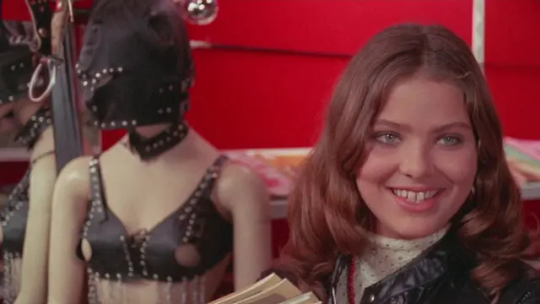
Experiencia prematrimonial 1972
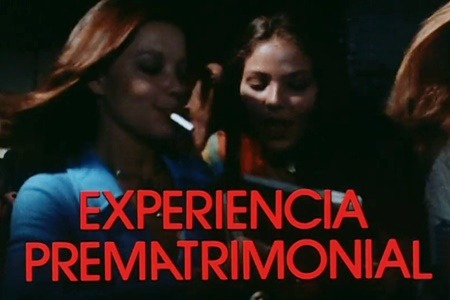
Le monache di Sant'Arcangelo 1973

Una chica y un señor 1974
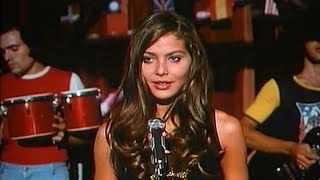
Cebo para una adolescente 1974

Appassionata 1974

Romanzo popolare 1974

La joven casada 1975
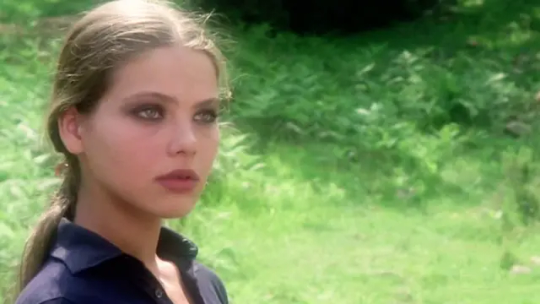
La dernière femme 1976
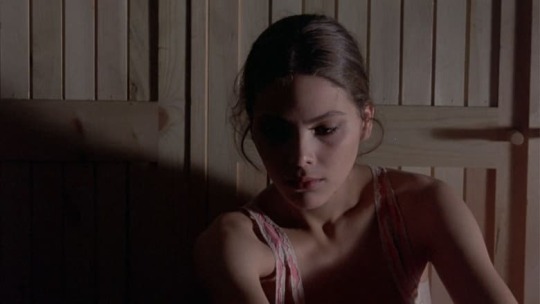
Mort d'un pourri 1977
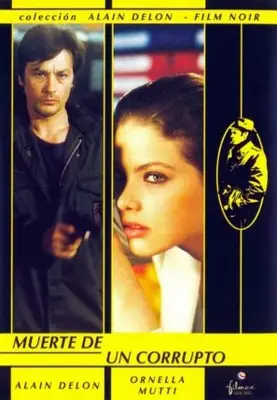
I nuovi mostri 1977
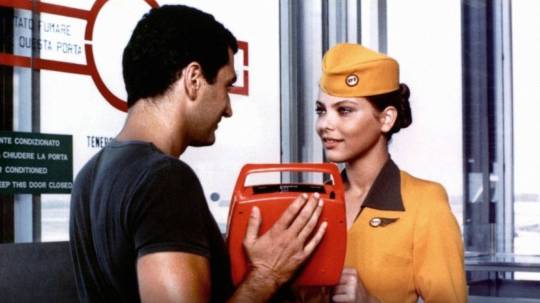
Ritratto di borghesia in nero 1978
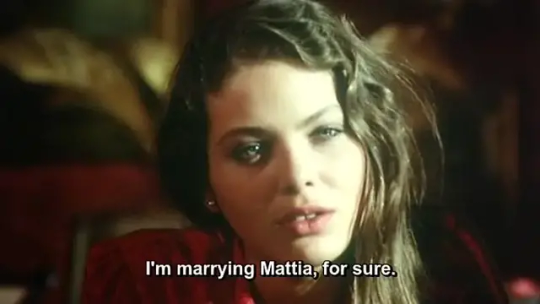
Primo amore 1978

Eutanasia di un amore 1978
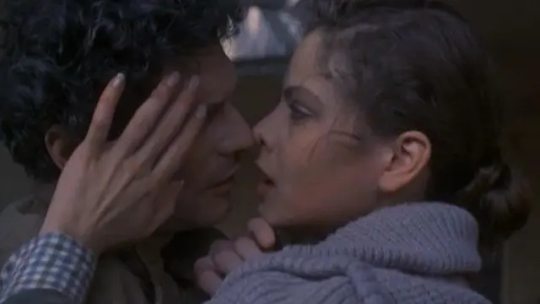
Giallo napoletano 1979
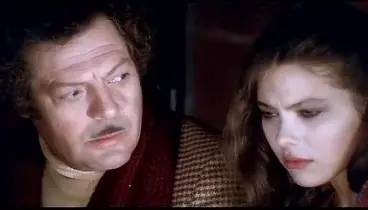
Flash Gordon 1980
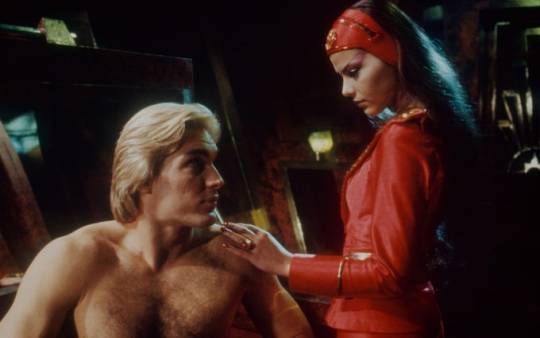
Il bisbetico domato 1980
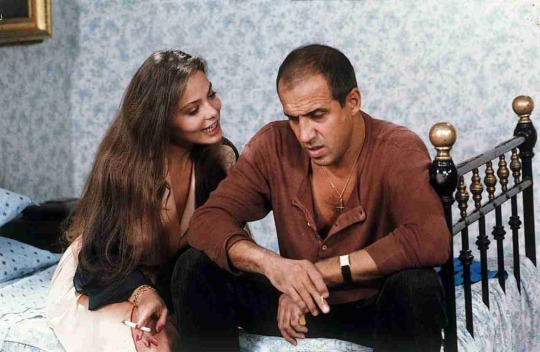
Love & Money 1981
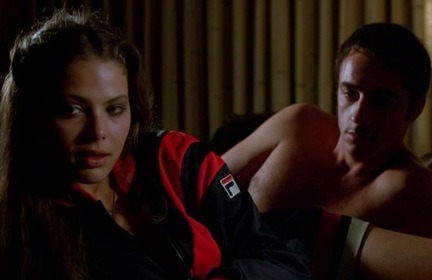
Innamorato pazzo 1981
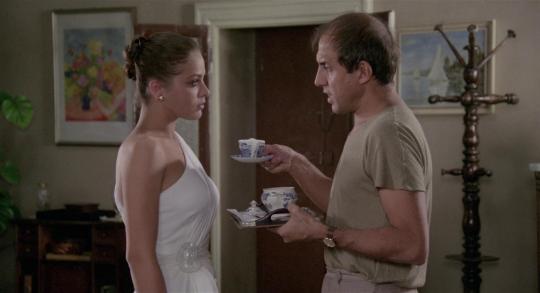
La ragazza di Trieste 1982
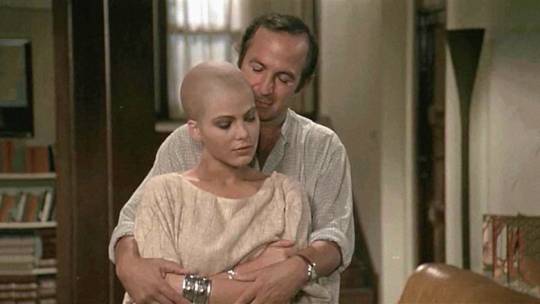
Bonnie e Clyde all'italiana 1983

Un povero ricco 1983

Il futuro è donna 1984
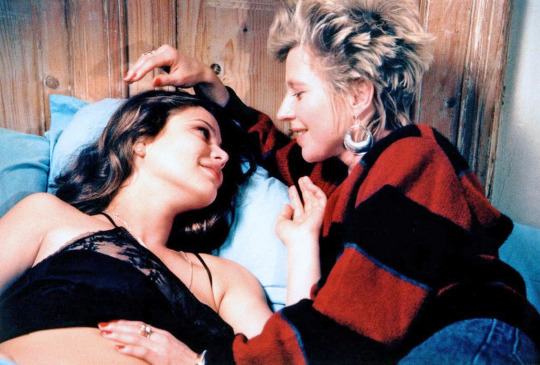
Stregati 1986

Codice privato 1988
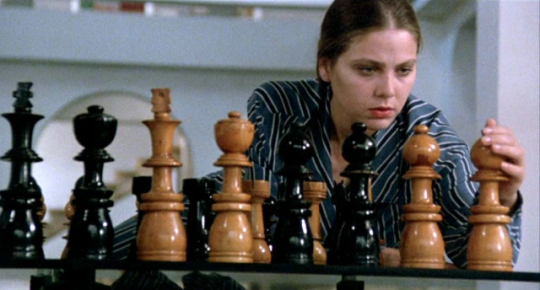
Stasera a casa di Alice 1990
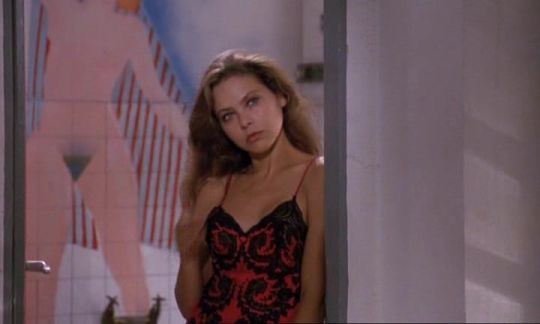
Non chiamarmi Omar 1992
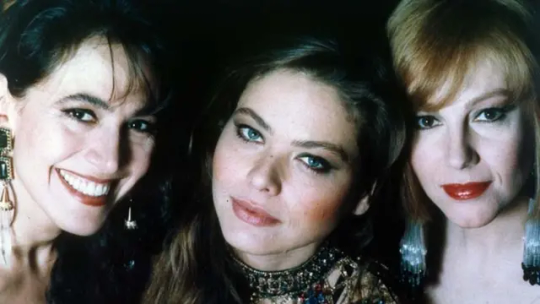
2 notes
·
View notes
Text
Round 2 Matches
(This post will be linked in the pinned masterpost)
Round 2 will start being posted in....a few days? I don't have an exact date for you yet but I'll let you know when I have all of the polls ready. The last poll in each group is a 3 way, due to the character count not coming out to 2 per match every time.
GROUP A
The Faceless One (Masters of the Universe) vs Leila Vernon (The Magic Misfits)
Rosalia Rossellini (Trauma Team) vs The Blue Electric Angels (Matthew Swift book series)
Chaerin Eun (Surviving Romance) vs Miyabi Hanakouji (Persona 2)
Merim Felspar (Three of Hearts Podcast) vs Ragna the Bloodedge (Blazblue)
Tragedian (Pathologic) vs Shadow Joker (Kaitou Joker/Mysterious Joker)
Rose Red (Ghost Quartet) vs Catherine Winters (Love, Money, Rock'n'Roll)
Nin (Paranatural) vs Seijyu (Mashin Eiyuuden Wataru/Mashin Hero Wataru)
Itakura Akira (Talentless Nana) vs Whisper (Golden Treasure: The Great Green)
Raikou Shimizu (Nabari no Ou) vs Kasane Fuchi (Kasane)
Kozlov Leifvich Grebnev (Biomega) vs Cyber 6 (Cybersix)
Zolophilia (Disciple of the Lich: Or How I Was Cursed by the Gods and Dropped Into the Abyss) vs Kate (Shadow’s House)
The Guardian (Hyper Light Drifter) vs Jyu Free (Dobutsu no Kuni/Animal Land) vs The Player Square (Adventure (Atari Game))
GROUP B
Sulfus (Angel's Friends) vs Tougou Mimori/Washio Sumi (Yuuki Yuuna is a Hero & Washio Sumi is a Hero)
Yellow Tempest (Ending Makers) vs Tirsiak (Spooky's Jumpscare Mansion)
Sugar Peace (High Card) vs Anima (Why Shouldn't a Detestable Demon Lord Fall in Love?!)
Walter Walzac (The Brave of Gold Goldran) vs Lex (Cryptid Crush)
Pappy van Poodle (Rusty’s Real Deal Baseball) vs Denzil and Cuthbert (Count Duckula (episode: Ducknapped))
Isaac (Awful Hospital) vs Tughril Mahmut (Shoukoku no Altair)
Oopsy Bear (Care Bears (2007 series)) vs Yin Yu (Heaven Official's Blessing)
Xuanli (Lanxi Zhen) vs Kondou Seiichirou (Isekai no Sata wa Shachiku Shidai)
Hikaru (Hikaru ga Shinda Natsu) vs Chase Beckley/Coworker (Elevator Hitch)
Uncle Flipping Hades Terwilliger (The Snarkout Boys and the Avocado of Death, by Daniel Manus Pinkwatee) vs Red Savarin (Solatorobo)
Bennett (Hello Charlotte) vs Senri (+Anima)
Nero (The Boy Who Fell) vs Sheila (Witch’s Heart) vs Queenie (BACK)
GROUP C
Bolt (Crypt of the Necrodancer) vs Pearl Forrester (MST3K)
Vella/Velouria Beastender Tartine (Broken Age) vs Garrett Miller (Extreme Ghostbusters)
Dr. Anna May (Scott the Woz) vs Bai Lang (My Tooth Your Love)
"Järnarmen"/"The Iron Arm" (Jönssonligan Dyker Upp Igen (1986)) vs Aliya Elasra (Heaven’s Vault)
Sawamura Tetsuo (Yuureitou) vs Doris Frances Barbara (Blood & Syrup: A Vampire the Masquerade Podcast)
Psianop the Inexhaustible Stagnation (Ishura) vs Katook (The Katurran Odyssey)
Kim Koizumi (Chroma Key) vs The Spider Core (The Lab - Core Slingshot)
Satyarani (Raven: The Secret Temple) vs Bamba (Kishiryu Sentai Ryusoulger)
Ink (Going Home) vs Rambler (Happy Happy Clover)
Felix Iskandar Escellun (Last Legacy) vs Nancy Neil (Snowboard Kids)
Nephis (Shadow Slave) vs "good" Tom (El Goonish Shive)
Ernő Nemecsek (A Pál Utcai Fiúk (The Paul Street Boys)) vs Dee Kennedy (Dayshift at Freddy’s) vs Kirinda (Juuni Senshi Bakuretsu Eto Ranger)
GROUP D
Todoroki Kakeru (Chō Soku Henkei Gyrozetter) vs The Exsurgent Virus (Eclipse Phase)
Heart (Moonlight Chicken) vs Captain Grace (Magical Girl Raising Project: Limited)
Es (Milgram) vs Copen Kamizono (Azure Striker Gunvolt)
Lady Bat (Mermaid Melody Pichi Pichi Pitch) vs Ulala (Space Channel 5)
Diggory Graves (Hello from the Hallowoods) vs Phon (3 Will Be Free)
Hizame (Amatsuki by Takayama Shinobu) vs Brutha (Discworld)
Raven (Gravity Rush) vs Kusuriuri (Mononoke)
Tin (Triage The Series) vs The Biologist (The Southern Reach trilogy by Jeff VanderMeer)
Silver (Oneshot) vs Raven (Raven (CBBC series))
Gary (Faith the Unholy Trinity) vs Roxis Rosenkrantz (Mana Khemia)
Shijima Tsukishima/Shimeji (Shimeji simulation) vs Cynthia (Incryptid)
Jefferson (Death's Door) vs Gruftine (Die Schule Der Kleinen Vampire / The School for Little Vampires) vs Nuch (Not Me The Series)
GROUP E
Sarah Collins (Dark Shadows (1966-1971)) vs Tangie (The Tangerine Bear)
Zaknafein Do'Urden (The Legend of Drizzt (Forgotten Realms)) vs Richard Conway (Gunpoint)
Zinn (Monstress) vs Leonie Beaumort (Aviary Attorney)
Magda (Vapors) vs Maki (Darker than Black)
Reo Miyao (Bokutachi no Ikita Riyuu (Our Reason For Living)) vs Principal Shirley Oddwell (Oddport Academy)
Cursebringer Angel (Baroque) vs The Cashier (Midnight Museum)
Inien (Thrilling Intent) vs Seaweed (Gloomverse)
Stag Malinay (Krystar First Fragment) vs Randy Rosebud (Maggie's Apartment)
No Significant Harassment (Rain World) vs Libby Day (Dark Places)
Sally Swing (Betty Boop) vs Conrad (The Castle of Otranto)
Goo (Inanimate Insanity) vs Shrimp (The Upturned)
Cecilia Sylvie (Cross-dressing Villainess Cecilia Sylvie) vs Sullen the Magic Mirror (Barbie as Rapunzel CD-ROM) vs Dash X (Eerie, Indiana)
GROUP F
Su Moting (God Troubles Me/Hanhua Riji) vs Gabrielle (Gabrielle's Ghostly Groove
Michiko Hada (Helter Skelter: Fashion Unfriendly) vs Liv (Spooky Month)
Etcetera (Cats (Musical)) vs Fumi-ba (Kamen Rider Ghost)
Corona Hoshino (Swans in Space (manga)) vs Karl (All Hail King Julien)
Wolfman (Darkwood) vs Granger (NeverHome game series)
Gaap Goemon (Mairimashita! Iruma-kun) vs The God of Hunting (A Herbivorous Dragon of 5000 Years Gets Unfairly Villainized)
Mission-chan (Mission-chan no Daibouken) vs Forest Friend (Gris)
Ellie (Monster Tale) vs Protagonist (Melatonin)
Dadish (Dadish) vs Turnip (Chicory: A Colorful Tale)
Guillermo "Dixon" Alverez (Rebelde (2022)) vs Agent (Penguinronpa)
Uhh… these guys? (Rhythm Heaven Fever) vs Mallory (Escam)
Miyauchi Rena (Blue Reflection: Second Light) vs Tiger of the Wind (Monster Rancher (1999)) vs The High Ki of Twi (The Enchanted Island of Yew by Frank L. Baum)
15 notes
·
View notes
Text
i'd like to do a fuller revisit of the idea of margarethe as a gothic character! this may be several posts. let's start here:
fairy tales, the female sphere, and female speech
the story of cinderella is a fairy tale in which the wicked stepmother is a narrative force, and not a fully realized character. she exists to provide opposition to the protagonist and be vanquished or overcome in some format, like the evil queen of snow white. "fairy tale" in itself is not a genre that encourages character depth, reflecting its original nature as oral/aural storytelling. insofar as any fairy tale character has real character, or motivation, it is sketched in the most straightforward way, and in the case of all fairy tale antagonists, unsympathetically. but is it possible to have, as they say, sympathy for the devil?
i am not the first person and will certainly not be the last to argue that the position of wicked stepmother in the cinderella fairy tale reflects certain actual patriarchal realities that were a part of women's lives throughout history. in social systems where women were considered, legally, perpetual minors and/or property, were prevented from accumulating wealth or participating in trades or the job market, and could neither inherit nor pass on estates after their death, the stakes were profoundly high when it came to the choice of marriage partners and the actions they took after the loss of a male partner.
the actions of the wicked stepmother become, in that context, understandable. cinderella presents a threat to the social well-being of her own daughters. if she has limited resources (regardless of whether cinderella's father is alive or dead in a given telling of the story, she will always have limited resources as a woman in a patriarchal society), she must exert all of those influences for the promotion and benefit of her own children. insofar as a woman can achieve anything in the world, that achievement is her children; their success, their ennoblement, their social rise. she has no choice, because this is all the power that society and the family will allow her: domestic power, the power of speech, the power of manipulation, the power of familial and domestic cruelty.
in her biography of agrippina minor, roman empress and mother of nero, emma southon quotes tacitus: "influence is rarely lasting, such is its fate." she and tacitus contrast influence with potestas, power, which is meaningful political action. influence is the realm of women; they use it to further the aims of their families, their children, acting from behind the throne and within the domestic sphere. (when nero wanted to sideline his mother, he sent agrippina out of the imperial palace to live in a separate house, and forbade senators and political actors from going there--confining her to a domestic, apolitical sphere, forbidding her from engaging in powerful speech.) maria tatar quotes ursula k. le guin in an interesting parallel in her book on female heroes and fairy tales, the heroine with 1,001 faces, discussing le guin's 1986 speech that describes a Father Tongue, "the voice of power and reason," and a Mother Tongue, "the language of stories, conversation, and relationships." "in this ideological dichotomy, the Mother Tongue is devalued as 'inaccurate, unclear, coarse, limited, trivial, banal."
the intimate connection between womanhood, motherhood, speech, domesticity, powerlessness, and, ultimately, female agency/evil (the same thing under patriarchy) find a conjunction in the figure of the wicked stepmother. in kenneth branagh's rendition of cinderella, on which much of my writing is based, lady tremaine (no first name, by the way--walk-on characters who are present for 15 seconds get first names, but the main antagonist doesn't!) quite literally talks cinderella into self-exile in the attic and self-removal from family togetherness. she never hits her, shoves her, beats her: she simply talks, and her words are enough. the most physical act she takes to confine and harm cinderella is when she locks her into the attic toward the end of the film, at the moment when it seems ella is about to achieve her freedom.
to that end, the cinderella fairy tale viewed from the stepmother's perspective becomes a story about patriarchy. it becomes a story about powerlessness, female dependence, and disenfranchisement under a social system that not only channels women into heterosexual partnership and marriage and requires motherhood of them, but forces them to wield motherhood as power--the only power they will have in a system that demands their exile from the public world of potestas and into the shuttered house. the domestic sphere and its limitations and cruelties, therefore, are hugely significant in the stepmother's story.
what does all of this mean? how does it make the wicked stepmother's story gothic? tune in next time...
5 notes
·
View notes
Text
SFCセプテントリオン CAST表の元ネタ
(数年前に書きかけのまま放置していた記事を投稿してみます。たぶん未完成です)
定期的にセプテントリオンの動画を摂取しないと死んでしまう体質なので、 動画を見ていて気になったエンディングのキャスト表の元ネタを調べてみました。 もじっていたり微妙に綴りが違ったり、そのまんまだったりするようです。
※代表作などはゲーム発売の1993年までの情報を中心にまとめています
CAST
CAPLIS KEIN CASNNER キャプリス=ウィッシャー:ケイン・キャスナー
ケビン・コスナー 「フィールド・オブ・ドリームス(1989)」「ボディガード(1992)」など 「アンタッチャブル(1987)」にてショーン・コネリーと共演
REDWIN JEAN HICKMAN レドウィン=ガードナー:ジーン・ヒックマン
ジーン・ハックマン 「フレンチ・コネクション(1971)」「スーパーマン(1978)」「ミシシッピー・バーニング(1988)」など ゲームの元になった「ポセイドン・アドベンチャー(1972)」の主人公・スコット牧師役
JEFFERY SEAN CHANERY ジェフリー=ハウエル:シーン・シャネリー
ショーン・コネリー 「オリエント急行殺人事件(1974)」「アンタッチャブル(1987)」など 「007(1962~)」シリーズの初代ジェームズ・ボンド役として有名 「大列車強盗(1979)」にて演じたエドワード・ピアースの偽名が「ジェフリー」
AMY JENIFFER CHANERY エイミー=マーカーソン:ジェニファー・シャネリー
ジェニファー・コネリー 「フェノミナ(1985)」など このゲームと同じくHUMANのシネマティックライブシリーズ第3弾「クロック・タワー」の主人公・ジェニファーのモデルでもある
LUKE ANTHONY EDWARDS ルーク=ハインズ:アンソニー・エドワーズ
アンソニー・エドワーズ 「トップガン(1986)」「ER緊急救命室(1994)」など 一字一句違わず名前がそのまんまなので逆に別の人かもしれない。 (ゲーム中の顔グラ見る限り雰囲気はなんとなく似ている)
HARRY JEFF BOTTOMS ハリー=アダムス:ジェフ・ボトムズ
ティモシー・ボトムスとジェフ・ブリッジスの合体か? 上記の二人は「ラスト・ショー(1971)」にて共演している。 彼だけなぜかフュージョンしているし、そもそも他の子供のキャストは子役で固めているのに対して二人とも当時既におっさんの役者であるので違うかも。
ジョセフ・ボトムズである説を発見しました。子役出身ではないですけどフュージョン説よりは自然ですね!
STERA DREW BARRY ステラ=アダムス:ドリュー・バリー
ドリュー・バリモア 「E.T.(1982)」「おもちゃの国のクリスマス(1986)」「ボディヒート(1992)」など
ADELLIA SHIRREY KNIGHT アデラ=ハウエル:シリー・ナイト
シャーリー・ナイト 「Dutchman(1967)」「エンドレス・ラブ(1981)」など
NERSON CHACK NORRIS ケリー=ネルソン:チャック・ノリス
チャック・ノリス 「ドラゴンへの道(1972)」「オクタゴン(1980)」「地獄のヒーロー(1984)」「炎のテキサス・レンジャー(1993~)」など 本物はCHACKではなくCHUCK。 Wikipediaによると元軍人であり、俳優であり、武術家であり、映画製作者であり作家であり政治評論家であり実業家であり社会運動家。一人でも脱出できそう。 ジェフリー編にしか登場しないのに豪華キャストである
EACARS WILLIAM DAHOE ジミー=エイカーズ:ウィリアム・ダフォー(?)
ウィレム・デフォー 「L.A.大捜査線/狼たちの街(1985)」「プラトーン(1986)」など 本名はウィリアム。「ミシシッピー・バーニング(1988)」にて演じた役名が「アラン」
CLAVER MICHAEL BEENS クレイバー=マシューズ:マイケル・ビーンズ
マイケル・ビーン 「ターミネーター(1984)」「エイリアン2(1986)」「ネイビー・シールズ(1990)」など 吹き替え声優は池田秀一。3点なのに豪華ry
BARBARA NASTASSJA KINSLY バーバラ=シンクレア:ナスターシャ・キンスリー
ナスターシャ・キンスキー 「テス(1979)」「マリアの恋人(1984)」「マグダレーナ(1988)」など
CAUPER PETER BOYLES クーパー=スミス:ピーター・ボイルズ
ピーター・ボイル 「ジョー(1970)」「ヤング・フランケンシュタイン(1974)」「タクシードライバー(1976)」「アウトランド(1981)」「サンタクローズ(1994)」など 2点のくせに豪華ry
PAMERA GRACE KELLY パメラ=スミス:グレース・ケリー
グレース・ケリー 「モガンボ(1953)」「喝采(1955)」「白鳥(1956)」など 一字一句違わずそのまんま。女優業を経てモナコ公国皇妃に。 過去の恋人にゲイリー・クーパーがいる。
STACY PAMERA MARTIN ステイシー=スミス:パメラ・マーティン
パメラ・スー・マーティン 「ハーディ・ボーイズ&ナンシー・ドルー(1977)」「ダイナスティ(1981~)」など 「ポセイドン・アドベンチャー(1972)」にて女子高生・スーザン役を演じている。ステイシーもそれくらいのお年頃だろうか
MARRY LILY BLAIR マリー=マクスウェル:リリー・ブレア
リンダ・ブレア 「エクソシスト(1973)」「エクソシスト2(1977)」など
FRANSOWER MARY GRIFFITH フランソワ=マクスウェル:メアリー・グリフィス
メラニー・グリフィスだろうか。 「ボディ・ダブル(1984)」「ワーキング・ガール(1988)」など もしくはジェイン・メアリー・グリフィスか? 「春風と百万紙幣(1954)」など。 マリーの母フランソワ役がメアリーだったり、 パメラの娘ステイシー役がパメラだったりするのおもしろい
ALAN TIM DULTON アラン=ゲーブルス:ティム・ダルトン
ティモシー・ダルトンか? 「嵐が丘(1970)」「フラッシュ・ゴードン(1980)」など 「007(1987)~」4代目ジェームズ・ボンド役を務める。
STACK JAMES WATOSON スタック:ジェームズ・ワトソン
生物学者のジェームズ・ワトソンだろうか(俳優じゃないけど) 急に俳優じゃない人ぶちこんでくるか…??? と思ったら、俳優の方もいました ジェームズ・A・ワトソン・Jr 「夜の大捜査線 霧のストレンジャー(1972)」など 俳優のジェームズ・ワトソンさんはもうお一人いらっしゃったけど、活動時期等考えるとそちらではなさそう…? (いっぱいいそうな名前だもんね)
RECHERD GERARD FHILIPS リチャード=カニンガム:ジェラルド・フィリップス
ジェラール・フィリップか? 「肉体の悪魔(1947)」「花咲ける騎士道(1951)」「赤と黒(1954)」「モンパルナスの灯(1958)」など 活動時期的にジェラール・フィリッペリかもしれない。 「クレイジー・ボーイ(1973~)」シリーズなど。
MILLER WILLIE NERO ミラー=ストライザース:ウィリー・ネロ
ウィリー・ネルソンか? どうもこのブロックにきてから元ネタが特定できない。もしかしたら俳優じゃない名前で固まってるのかもしれない ウィリー・フランシス・ネロという歌手がいるが、女性である。
TENDER RICHARD RUSSEL テンダー=ジョンストン:リチャード・ラッセル
どうやら俳優さんでリチャード・ラッセルさんがいらっしゃったようなのですが詳細はよくわからず。 他にも音楽プロデューサーのリチャード・ラッセルさんもいらっしゃるそうです。
カート・ラッセル説を発見しました。 「ザ・シンガー(1979)」「遊星からの物体X(1982)」「シルクウッド(1983)」「デッドフォール(1989)」「不法侵入(1992)」など
KATHERINE CYBILL SHEPARD キャスリン=メイプルズ:シビル・シェパード
シビル・シェパード 「ラスト・ショー(1971)」「タクシードライバー(1976)」「ワン・モア・タイム(1989)」など 本物はSHEPHERD。やっと特定できる人がきた。 理由は後述しますがこちらはダンサーのキャスリン(ケイトじゃない方)と思われます。
ROBERT MATTHEW FREDERICK ロバート:マシュー・フレデリック
マシュー・ブロデリックか 「ウォー・ゲーム(1983)」「フェリスはある朝突然に(1986)」など 「ライオン・キング(1994)」ではシンバ役(声優) 「グローリー(1989)」にて「ロバート」役を演じている。 肝心のロバートがゲーム本編に登場しないが。 (スタックが載ってるあたり、エバートの間違いなのか??エバートがロバートの間違いなのか…??) 綴りも全く同じな建築家のマシュー・フレデリックという人物がいるが、たぶん関係ない……と思う
MICHAEL JOE ALLESANDRO ミッシェル=バニングス:ジョー・アレッサンドロ
ジョー・ダレッサンドロ 「トラッシュ(1970)」「悪魔のはらわた(1974)」「クライ・ベイビー(1990)」など
ANNA CAROL WHITE アンナ=タマロ:キャロル・ホワイト
キャロル・ホワイト 「夜空に星のあるように(1968)」など 綴りがそのまんまなので別人の可能性ry
FRANK MICHAEL KAIN フランク=コーニー:マイケル・カイン
マイケル・ケイン 「国際諜報局(1965)」「ポセイドン・アドベンチャー2(1979)」「ハンナとその姉妹(1986)」「マペットのクリスマス・キャロル(1992)」「沈黙の要塞(1994)」など 「リタと大学教授(1983)」「影の軍隊(1986)」で「フランク」役を演じている
HENRY ROB BENSON ヘンリー=エイブラムス:ロブ・ベンソン
ロビー・ベンソンと思われる 「ビリー・ジョー 愛のかけ橋(1976)」「アイス・キャッスル(1978)」など 「美女と野獣(1991)」のビースト役の声優としても有名。
JACK DAVID VENNENT ジャック=ハミルトン:ダーフィト・ヴェンネント
ダーフィト・ベンネント 「ブリキの太鼓(1979)」「レジェンド/光と闇の伝説(1985)」など 本物はBENNENT。
PEINS JEFF DANIELS アンソニー=ペインズ:ジェフ・ダニエルズ
ジェフ・ダニエルズ(綴りまんま)でいいのだろうか。 「愛と追憶の日々(1983)」「カイロの紫のバラ(1985)」など 1994年公開の「スピード」「ジム・キャリーはMr.ダマー」が有名
LATON HECTOR ELLIOT ウィンス=ラニー=レイトン:ヘクター・エリオット
ヘクター・エリゾンドか 「生き残るヤツ(1971)」「アメリカン・ジゴロ(1980)」「フラミンゴキッド(1984)」「プリティ・ウーマン(1990)」など
CRAFT NEVILLE BRANDLE ハンフリー=クラフト:ネヴィル・ブランドル
ネヴィル・ブランド 「都会の牙(1950)」「第十七捕虜収容所(1953)」「マッドボンバー(1972)」「悪魔の沼(1977)」など 悪役・殺人鬼役で有名だったそうなのでこの方と思われる。 たしかに殺人以上のこともしてらっしゃる。。。
ANGERICA KATHLEEN TURNEY アンジェラ=スノーリーブス:キャスリーン・ターニー
キャスリーン・ターナー 「ロマンシング・ストーン 秘宝の谷(1984)」「女と男の名誉(1985)」「ローズ家の戦争(1989)」「私がウォシャウスキー(1991)」など
KATHERINE PHOEBE KATES キャスリン=クレイトン:フィービー・ケイツ
フィービー・ケイツ 「パラダイス(1982)」「再会の街/ブライトライツ・ビッグシティ(1988)」「フィービー・ケイツの 私の彼は問題児(1991)」など 本物の綴りはCATES。 アンジェリカとの連名、役者の名前がケイツなことからこちらがキャスリン(ケイトの方)と思われる。 (「グレムリン(1984)」でも「ケイト」役を演じている) そして中の人がキャスリンなのはアンジェリカ。ややこしいw
PASSENGER WOODY ARLEN パッセンジャー(乗客):ウディ・アーレン
ウディ・アレン Wikipediaによると映画監督、俳優、脚本家、小説家、クラリネット奏者。アカデミー賞史上最多ノミネート。多才な方だあ 風貌的にヘンドリックス医師だろうか(乗客扱いなのかどうかは微妙ですが)
PASSENGER BROCK SHIELDS パッセンジャー(乗客):ブロック・シ��ルズ
ブルック・シールズ 「プリティ・ベビー(1978)」「青い珊瑚礁(1980)」「エンドレス・ラブ(1981)」���ブレンダ・スター(1989)」など 名無しとはいえ大物女優なのでジャックのママか、もしくは子役出身なのでジェーン役かもしれない
PASSENGER MARK HAMILTON パッセンジャー(乗客):マーク・ハミルトン
「スター・ウォーズ(1977)」のルーク・スカイウォーカー役であまりにも有名なマーク・ハミルではなかろうか そのままマーク・ハミルトンという役者さんもいらっしゃるのだが、出演作が「赤い谷から来た男(1925)」などなので他と比べてちょっと古すぎるような気がする
PASSENGER GATHRINE DENUV パッセンジャー(乗客):ギャズリーヌ・デヌーブ(?)
カトリーヌ・ドヌーヴと思われる。 「シェルブールの雨傘(1964)」「ロシュフォールの恋人たち(1967)」「リスボン特急(1972)」「終電車(1980)」「インドシナ(1992)」など 大女優さんだしセリフのある役だとしたらこちらがジャックのママかも。
PASSENGER LOYD BRIDGES パッセンジャー(乗客):ロイド・ブリッジス
ロイド・ブリッジス 「サハラ戦車隊(1943)」「沈黙のガンマン(1969)」「ポリス・ストーリー/聞き込み(1975)」「フライング・ハイ(1980)」「ホット・ショット(1991)」など 本物の綴りはLLOYD。 この人オーナー役じゃないかな????いや勝手に想像してたオーナーの雰囲気にお写真がそっくりだったってだけなんですが(つまりはただの妄想) 主に敵役として出演していたらしいし、銃構えてる画像出てくるし() オーナーは乗客に含まれるのか。。???それが問題だ…
SAILOR ROBERT MOLISE セーラー(船員):ロバート・モリス
ロバート・モリスだろうか。綴りはMORRIS。 「フランケンシュタイン 死美人の復讐(1967)」など?
SAILOR TOM TANKS セーラー(船員):トム・タンクス
トム・ハンクス 「スプラッシュ(1984)」「ビッグ(1988)」「フィラデルフィア(1993)」など
SAILOR BILL MURONI セーラー(船員):ビル・ムロニ(???)
わからない\(^o^)/ ブレノ・モローニだろうか。
SAILOR JOE DARIO セーラー(船員):ジョー・ダリオ
わからない\(^o^)/ 作詞家のジョー・ダリオンさんならいる。
調べ終わってみて
主人公陣と女性陣はおおむねイメージどおりの役者さんでしたね!😆😆 男性陣は意外な方やイメージと違う方が多かったので、元ネタを間違えているか、もしかしたらあんまり役者さんの雰囲気は関係なくお名前だけ取ってるのかも。 でも個人的にミッシェル役は超納得でした!!www
ぶっちゃけ自分がぱっと見で元ネタがわかった人はキャプリスコスナーだけだったので、かなり洋画がお好きな方が考えたんだろうなあ、と想像してわくわくしました。 マイナーだけど個人的に推してる俳優さんのお名前とかきっと入ってるんだろうなあw
もしかしたらお一人で考えたのかもしれないし、何人かで考えたのかもしれないし、ブロックごとに別の方が考えたのかもしれない (だとしたらフランソワ~ロバートのブロックがやたらわからなかったのも納得) でもいずれにせよ、このキャスト表を考える作業はきっと楽しかったんだろうなあ、と思いました。😊😊
セーラーの4人が半分はわからなかったのだけど、 この4人の中に機関長も含まれてるとしたらトム・タンクスさんがそうなのかな??
ところでラットラー軍曹はどこ???パッセンジャーの誰か? お名前的にウディ・アーレンさんかマーク・ハミルトンさんかロイド・ブリッジスさんのどなたかなのかな 元ネタ的には誰も太ってn……いやここまで見た感じ元ネタの役者さんのイメージはあんまりキャラに関係なさそう(名前借りてるだけ)な気もしますがw ロイド・ブリッジスさんがオーナー役でなければラットラー軍曹役で、マーク・ハミルトンさんがオーナー役でもいいな。。。かっこいい!
まあメインキャスト以外は誰が誰とか特に考えないで書いてらっしゃるかもしれないのですが、こうやって想像できる楽しみもあるよね。 何度見てもこだわりが伝わる素敵なスタッフロール、そして素敵なゲームです。
5 notes
·
View notes
Text

DENON PMA 700
Produttore: Denon
Modello: PMA-700V
Anno di fabbricazione: 1986
Prodotto in: Giappone
Colore: Champagne/nero
Tipo: Analogico
Controllo remoto: -
Consumo energetico: 220 watt
Dimensioni: 434x157x397mm
Peso: 10,5 kg
Nuovo prezzo circa: 1000,-DM
Connessioni
Numero di ingressi: 11
Phono MM: 2,5mV 47kOhm; Phono MC: 200 microVolt 100 Ohm; tutti gli altri: 150 mV 30kOhm
CD
Sintonizzatore
Ausiliare 1
Aux 2
Nastro1
Nastro2
Processore in
2 ingressi video
Numero di uscite:
2 coppie di altoparlanti A e B
Nastro1
Nastro2
Loop del processore in uscita
Video: Monitor fuori
Dati tecnici
Potenza continua (a distorsione)
8 Ohm: 2 x 100 Watt RMS, distorsione <0,02% ; 20-20000Hz
4 Ohm: 2 x 120 Watt
Alti: + - 10 dB a 10 kHz Intensità: 100 Hz + 7 dB, 10 kHz + 6 dB
Filtro alto: -
Filtro basso (subsonico): -
Disattiva audio: -
Diretto/Linea-Dritto: sì
Caratteristiche speciali
qui, se disponibile
0 notes
Text
i can say this its 2 minutes past midnight for me HAPPY BIRTHDAY NERO
hes 1986 years old already... they grow up so fast...
8 notes
·
View notes